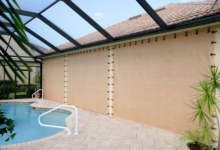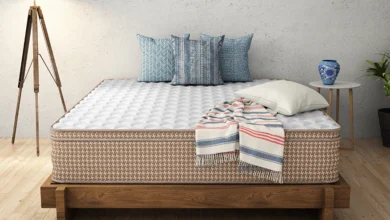
A Look At Range Hoods and How You Can Customize Them
Your home appliances or furniture can become outdated over time. As such, updating them regularly is important to ensure their longevity. The range hood is one of those household appliances that require regular maintenance.
A range hood is an important kitchen appliance that helps remove smoke and odors from cooking food. They also provide ventilation for the kitchen. However, if left unattended, it can easily go out of order. Whether you want to upgrade or replace its appearance, it is possible to customize your range hood to match your taste.
Table of Contents
Types of Range Hoods
CopperSmith hoods have a wide selection of range hoods to choose from. Here are some types of hoods available.
Wall-chimney hoods
These hoods work where there are no cabinet walls. This type requires you to route up ductwork through the ceiling. It helps funnel fumes and should be six inches wider than your cooktop to enhance functionality. When mounted, it exposes its vent stacks to vent to the outside.
Under Cabinet hoods
This type is mounted under a wall cabinet bottom. Some models have a shallow hood that comes out of the upper kitchen cabinet when needed. However, most cabinets extend about halfway across your burner, with this extension routing smoke and steam away from the cabinet to the suction end of your range hood.
Island hoods
They are mounted using ductwork in the ceiling. They also don’t have walls or cabinets around them to funnel fumes. This means they must be wider than your cooktop to work effectively and efficiently.
Downdraft hood
This hood reverses smoke and fume direction and exhausts them through ducts found beneath your floor. However, they are the least effective in exhausting fumes and are useful where it is impossible to route ductwork through the ceiling.
Ductless hoods
This option allows installation that directs heat, smoke, and steam away from your stovetop and back into the kitchen. However, this type is not recommended since it takes odors and smoke from the stove and disperses them throughout your kitchen and home.
What to Look for When Choosing a Range Hood
Style
The style of your range hood should match the overall kitchen style. Whether traditional or modern, the hood range should be stylish and practical. CopperSmith hoods are great examples of stylish and practical hoods.
Functionality
The best hoods excel at containing smoke and fumes by exhausting them and cleaning the air. You can choose between duct-free and vented CopperSmith’s hoods. However, vented hoods are better than duct-free hoods in disseminating smells and fumes but are also more complex to install.
Choose a hood like the CopperSmith hood with a thermostat control that automatically turns on when temperatures under the hood get too high. It should also have a convenient feature for turning off the fan after a specified time.
Also, choose a hood with at least two fan speeds. A high-speed setting is used during cooking, and a low and quiet setting is used after cooking for ventilation. However, three or more fans is too many. CopperSmith hoods are perfect for functionality.
Size
With coppersmith hoods, the bigger it is, the better. Ideally, the hood should be wider than your cooktop or cooking surface. Also, avoid downdraft hoods as they are unimpressive.
Design
Choose between under cabinet, island, downdraft, and wall chimney hoods. Then, choose the design that works best for your kitchen.
How to Design a Custom Range Hood
Updating or replacing your range hood allows you to make it blend in with the kitchen or choose a unique style to match your taste. Also, consider your budget to design a custom hood or buy a ready-made coppersmith hood. Custom hoods are easy if you have a handy person or contractor readily available. But, again, they should be skilled, or the end product will not be as creatively awesome as you expected. You might then have to spend more redesigning the custom hood or getting a readymade CopperSmith hood. Here’s how to make a custom range hood.
1. The hood insert
The first thing you need is the hood insert. You can easily purchase it alongside the hood liner and venting kit. Choose an insert depending on the type of chimney hood and custom hood you want. Also, do your math to determine what fits your budget. For example, you may find a custom range hood more expensive than a readymade one.
Then measure your range hood’s desired depth, height, and width, including the exhaust fan size, liner size, and vent placement to the roof or outside wall. Then create the hood frame with your preferred material.
2. Location of the hood
Next, you need to decide where to put your range hood. This location depends on your kitchen style. For a sleek and modern look, you can choose to frame out a specific area to the ceiling, drywall it, and trim out the bottom. You can use the same range of hood wood to make floating shelves on either side of the hood.
Also, you can choose to place the hood between two cabinets. Then, get your contractor to frame a box, wrap it with salvaged cedar siding, and paint it according to your preference. Also, remember that the more details you add to the range hood, the more it will cost.
3. Assemble the hood
Once you determine the location and install the range hood, it is time to install the exhaust fan and liner and secure them with hardware provided by the manufacturer or wood screws. Then connect the exhaust fan to ductwork using the manufacturer’s guide.
4. Prime and paint
Use wood filler to fill small seams and nail holes. With a caulk gun, apply trim caulk to the seams of the frame, crown, and trim. Let the caulk and wood filler dry. Then sand rough areas and use a damp cloth to wipe off the dust. Finally, prime the range hood with a quality primer, let it dry and paint as desired.
Conclusion
More airflow means quicker venting but doesn’t guarantee better hood functioning. However, whatever hood you choose, install it properly according to the manufacturer’s guide. Ideally, you should install your CopperSmith hood between 18 and 30 inches above the burners.








